Walk Toronto was founded ten years ago, in 2013 (I was one of the founders and am still a member of the steering committee). It’s a grassroots, volunteer advocacy group dedicated to making Toronto a better city for walking – which includes not just making it safe, but making it appealing to walk anywhere in the city.
Over those ten years, we’ve advocated for a lot of improvements and criticized the City about a lot of shortcomings. There is still a lot of work to do – Toronto is still not safe enough for pedestrians and it could be a much more appealing place to walk in many parts of the city. But at the same time, it’s important to appreciate those improvements that have happened, and to celebrate the positive aspects of walking in Toronto.
Toronto is amazingly walkable.
Lots of beautiful storefronts and interesting businesses that make walking much more enjoyable.
Minimal setbacks, small lot sizes, and no parking lots in front of stores all help with walkability. pic.twitter.com/MJtsqigTbC
— Derrick (@DerrickSimpson_) December 12, 2023
Even though the past ten years have been dominated by conservative mayors and councils that did not make walking a big priority, some useful improvements have been implemented. Walk Toronto actively advocated for some of these. Others happened through the less visible background processes of City staff, politicians, or other non-governmental organizations. Some of these are big-budget, highly visible construction projects; others are small details that still make a big difference to how safe and enjoyable it is to travel on foot. Some are specific to particular areas, while others affect the city as a whole.
So, to mark ten years of walking advocacy by Walk Toronto, I have put together a list of ten new initiatives over the past decade that have made Toronto a better city for walking.
1) Vision Zero
Vision Zero is a policy, originating in Sweden, that aims to reduce traffic fatalities and serious injuries to zero (something a few cities, like Oslo and Helsinki, have come close to achieving). Under pressure to do something about rising pedestrian fatalities, in 2016 Toronto proclaimed it was introducing a version of Vision Zero. However, the implementation and budget was so half-hearted that it came under fierce criticism (including from Walk Toronto).
In 2019 Toronto introduced a more serious “Vision Zero 2.0.” It’s still not a full Vision Zero policy – it’s focused on piecemeal improvements rather than large-scale transformations – but it brought with it a reasonable budget and some real initiatives. While they began slowly, they have accumulated a little more every year. Five years after it began, while vehicle traffic levels are back to pre-pandemic levels, the number of pedestrians killed and seriously injured in Toronto has been somewhat lower than the pre-pandemic numbers, though still too high. We’ll have to wait and see if that progress continues or backslides.
A lot of different improvements got set in motion with Vision Zero. Some of the key initiatives were:
- Speed limit reductions. It’s well established that speed kills. While speed limit reductions have been piecemeal rather than systematic (other than on Toronto-East York’s local roads, where they’ve all been reduced to 30 km/hr), they’ve nonetheless added up to being significant. (Even in the absence of physical changes, speed limit reductions have been shown to reduce average speeds somewhat.)
- Speed cameras. Again, while automated speed enforcement remains limited, it still has an impact on reducing speeds and raising awareness that speeding is a problem.
- Advanced walk signals. An ever-increasing number of traffic signals in Toronto use leading pedestrian intervals that give the pedestrian walk signal a few seconds before vehicle lights change – ensuring pedestrians get a head start when crossing at intersections, which has been demonstrated (PDF) to increase pedestrian safety.
- Physical intersection improvements. The City has become more systematic about introducing physical changes to intersections to make them safer, such as tightened curb radii, bump-outs, and even raised intersections. And where an intersection isn’t being rebuilt, the City has been willing to use inexpensive temporary materials to delineate bump-outs.
While there’s no systematic plan across the city, over the course of five years these measures have begun to add up and reshape the city into one that is safer for pedestrians.
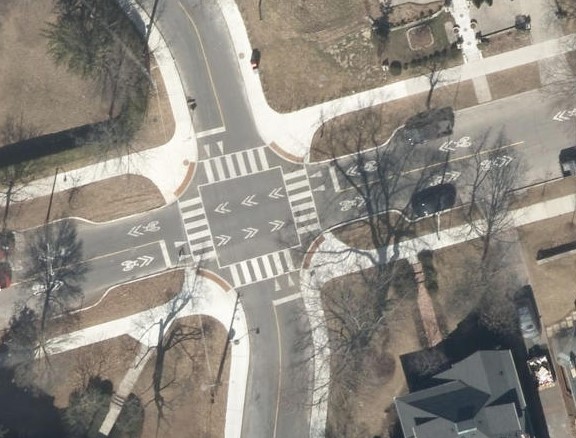
2) Sidewalk snow clearing across the whole city
One of Walk Toronto’s first and most sustained campaigns was to get the City to expand sidewalk snow clearing to the sidewalks of the older parts of Toronto, where property owners were expected to shovel their sidewalks themselves (with extremely uneven results).
We got a few small improvements but we’d almost given up when a wave of pressure from then-mayor John Tory’s electoral base in midtown Toronto during the particularly harsh 2019 winter helped turn the tide. In 2021 City Council approved a plan to have the City plow snow from all sidewalks in the City. It bought its own sidewalk plows and initiated the program that winter. The service has seen some teething difficulties, but at least the principle that the City should be responsible for making sidewalks safe for all pedestrians in the winter is now established. We can hope the implementation will improve.
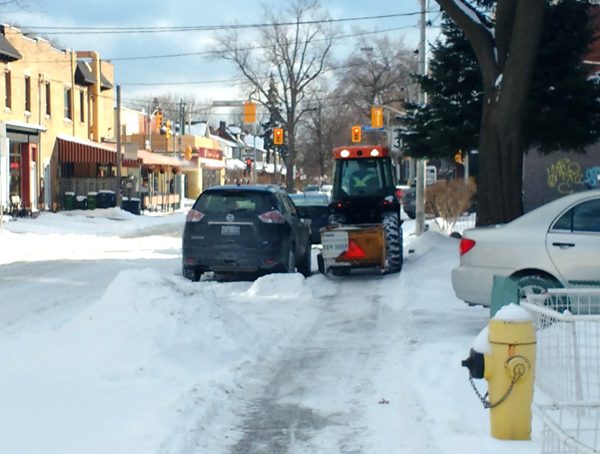
3) Pedestrian/cycling bridges
Garrison Crossing – the Fort York pedestrian/cycle bridge – was initially cancelled by Rob Ford when he became mayor, a depressing sign that pedestrians would be even less of a priority than before. But the project was later revived and finally built. Pedestrian bridges can be very valuable for creating appealing connections across significant barriers. They cost a lot, so building them shows a real commitment to creating a walking (and cycling) network. Even more commitment to creating an appealing pedestrian realm is shown when the bridge is beautifully designed – a fine example is the replacement bridge linking the Eaton Centre and The Bay across Queen Street West.
Another pedestrian bridge is being planned to connect across the Keating Channel to the planned new neighbourhood on Villiers Island sometime in the future. As well, Waterfront Toronto’s new multi-modal bridges set aside plentiful, attractive space for pedestrians (unlike most past bridges), which is a promising sign for the future.
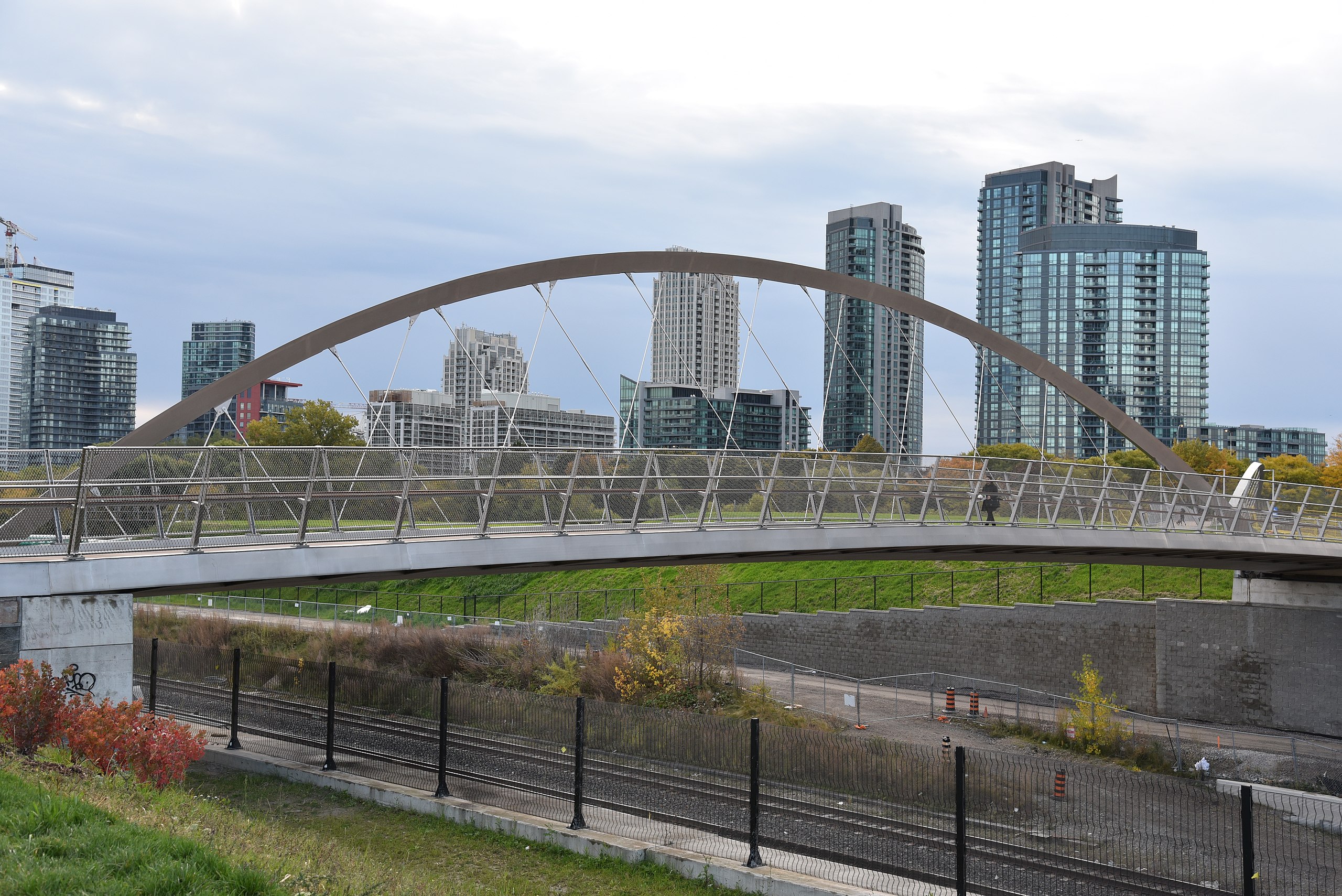
4) New multiuse trails
Toronto has been steadily building new multiuse trails through its green spaces, in many cases creating connections that allow easier access to green spaces and create more extended off-road routes for walking, running, or cycling. The most spectacular is The Meadoway, built with some private non-profit support through a hydro corridor in Scarborough. But many other trails have also been built, improved, connected, or extended, such as the East Don Trail. In the long term, the ideal goal is to create an extended, fully connected off-road trail system around the entire city.
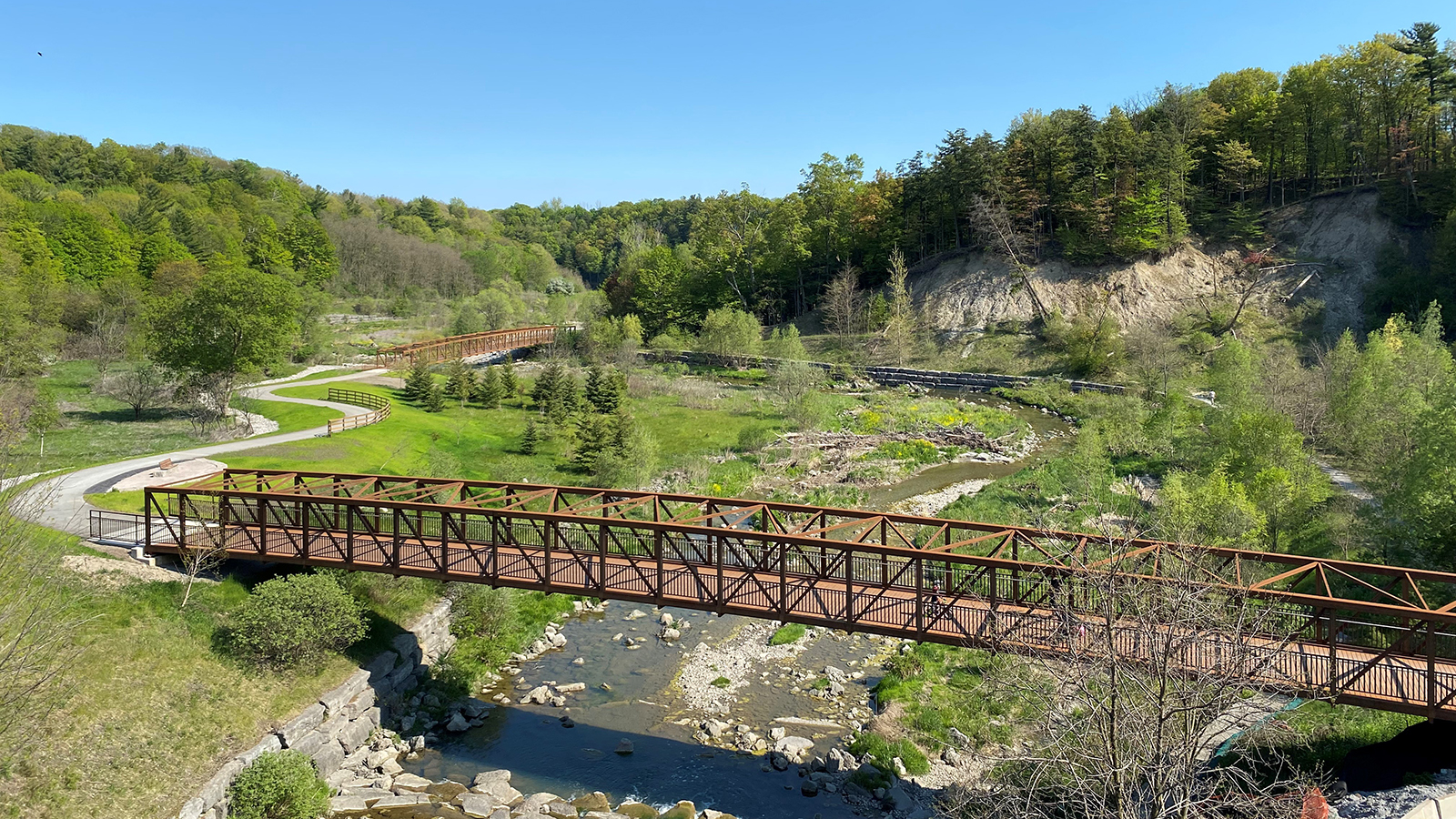
5) New patio rules
In the past decade, the City took advantage of new provincial rules to allow a much more creative implementation of patios across the City. Patios could now be set up curbside, and servers could walk across the sidewalk to serve food and, crucially, alcohol. At the same time, any establishment could set up a couple of chairs and a table as of right (for free, without asking) in a metre of space immediately outside their frontage. And patios were legalized in Scarborough. In exchange, patios were supposed to be set up to allow a straight “clearway” for pedestrians, making sidewalks more accessible for those with mobility challenges. While still imperfectly implemented, the new rules brought more variety and life to the city’s streets while improving accessibility.
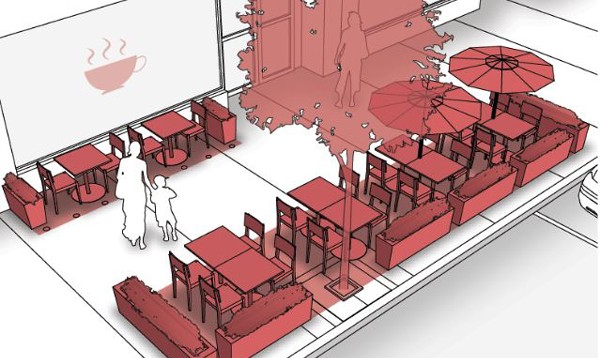
The new patio rules also paved the way for …
6) Curb lane takeovers (parklets, CafeTO)
Before the pandemic, Toronto had already begun a program enabling BIAs to establish parklets – a little park or benches on a platform in a parking space, open to the public to use. Often these were just for the summer, but the King Street Transit Corridor introduced several year-round ones designed by artists. They provided amenities and visual interest to pedestrians, while creating a buffer from vehicles and making the sidewalk the middle rather than the edge of the public realm for one little stretch.
When the pandemic hit, the City’s experience with patios and parklets enabled it to quickly launch CafeTO in the summer of 2020, taking over curb lanes during the warm months to provide patios for restaurants, cafes, and bars where people could congregate safely outside, while providing an economic lifeline for them. (Each stretch also always included one little patch of public space, with Muskoka chairs where people could hang out for free). Now sidewalks were the centre rather than the edge of vibrant activity for significant stretches. The program was so successful that it has been made permanent (as usual, with some bumps along the road that are being smoothed out).
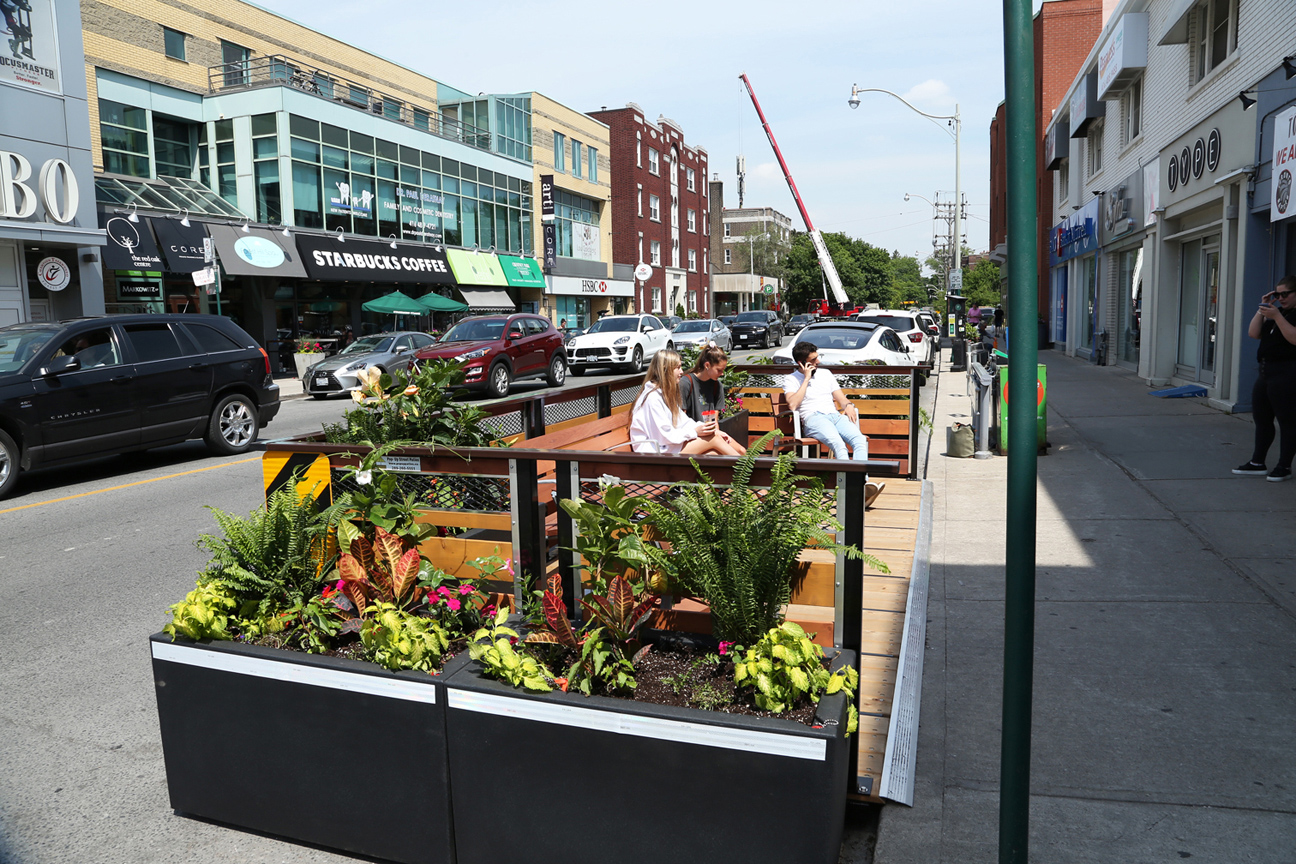
7) Accessibility
The City has made some improvements to accessibility for people with mobility challenges:
- Tactile indicators at street corners. The city has introduced a much more effective – and also more attractive – corten steel tactile indicator at intersections for people who use a cane for mobility because they have limited or no sight. They replace what used to be hard-to-detect grooves in the concrete. The city did a pilot project downtown with various options, and the one you now see at street corners emerged as the best choice – attractive, effective, and robust.
- Extended crossing times. To accommodate seniors, children, and others who walk more slowly, the City has extended the time it gives for people to walk across at a signalized intersection. It now allows a walking speed of 1.0 m/s as opposed to the former 1.2 m/s.
- Audible pedestrian signals. These signals, which allow people with visual impairments to hear a sound that tells them when and where it’s safe to cross, are being rolled out slowly across the city (and at all new traffic signals). They are activated by a push button (it emits a low sound to let those who need it know its location to press).
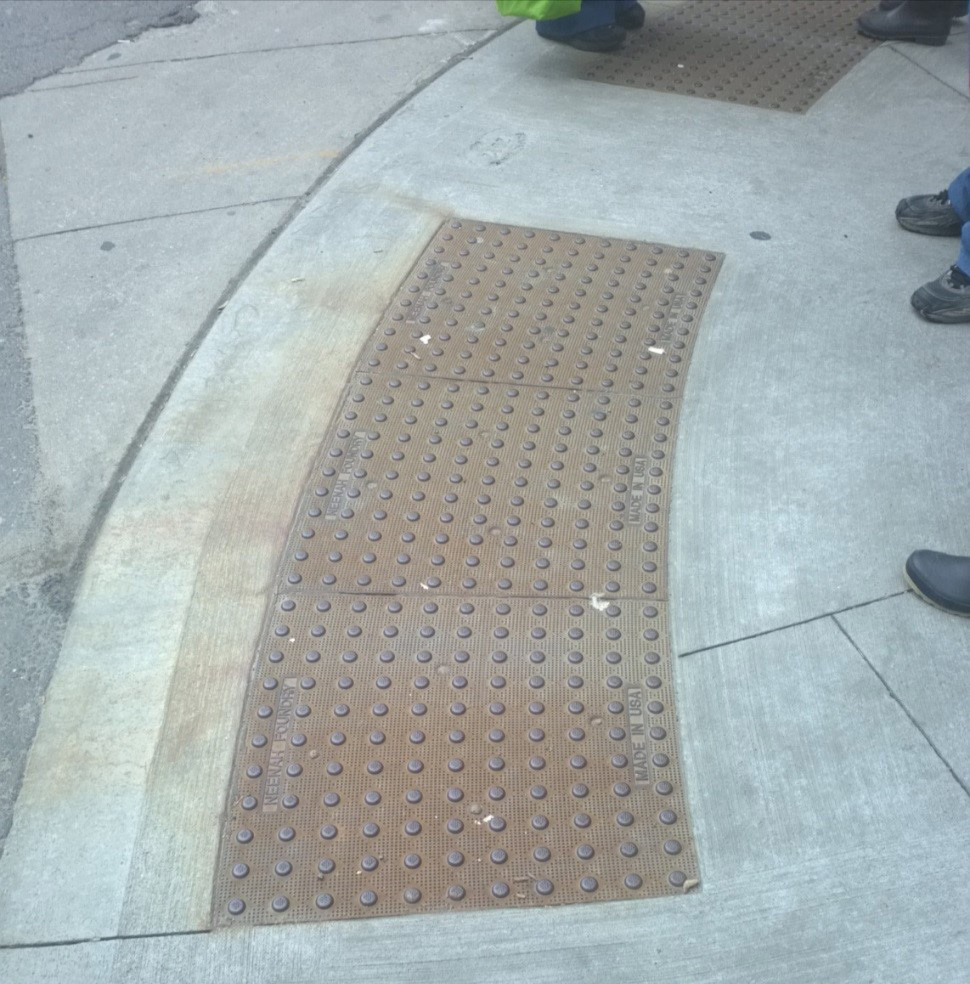
8) Wayfinding
The TO360 wayfinding system is being rolled out gradually in different parts of the city, often in partnership with local BIAs or institutions. It was developed by international experts working with the City and with a detailed consultation process. The wayfinding consists of large panel boards that show maps with landmarks and destinations, with circles showing 5 and 15 minute walking radiuses. They are supplemented by “finger-post” arrows that show the direction and distance to primary destinations. A companion system is being rolled out in Toronto parks and the TTC. While wayfinding may seem less necessary in the age of Google maps, it encourages wandering and discovery rather than just single destinations. And it’s helpful when the phone battery runs out.
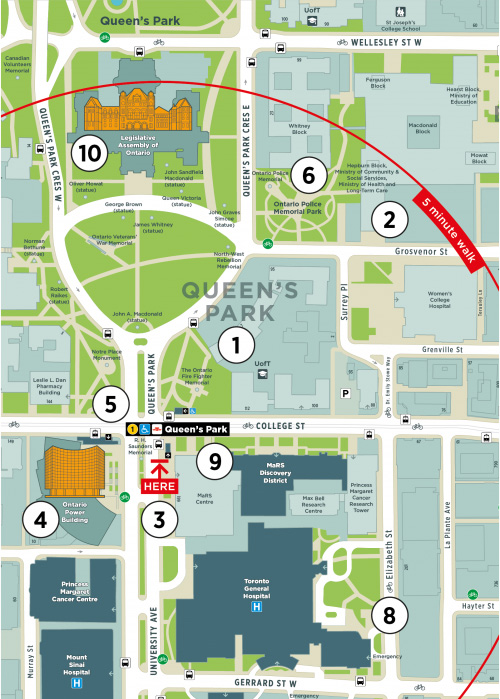
9) Pedestrian Zones
Toronto is finally developing some permanent or seasonal pedestrian zones (outside of Toronto Island). Gould Street, at the heart of Toronto Metropolitan University, was turned into a pilot project pedestrian zone in 2012, closed off with planters, paint, and temporary furniture. In 2020, it was opened as a fully developed permanent pedestrian zone, closed off with bollards, with trees, benches, and pavers installed. Over at the University of Toronto, the Willcocks Street pilot pedestrian zone, also opened using temporary materials in 2012, now has a design to make it permanent and awaits construction.
Meanwhile, on the block of Market Street beside the St. Lawrence Market, a clever rebuild created a flexible street where, in the summer, patios could extend over the sidewalk while the sidewalk itself took over parking spaces. In 2022, the street became fully pedestrianized during the summer months, and there is talk of making it permanently pedestrianized year-round.
These are still small samples compared to many cities, but they are a step forward.
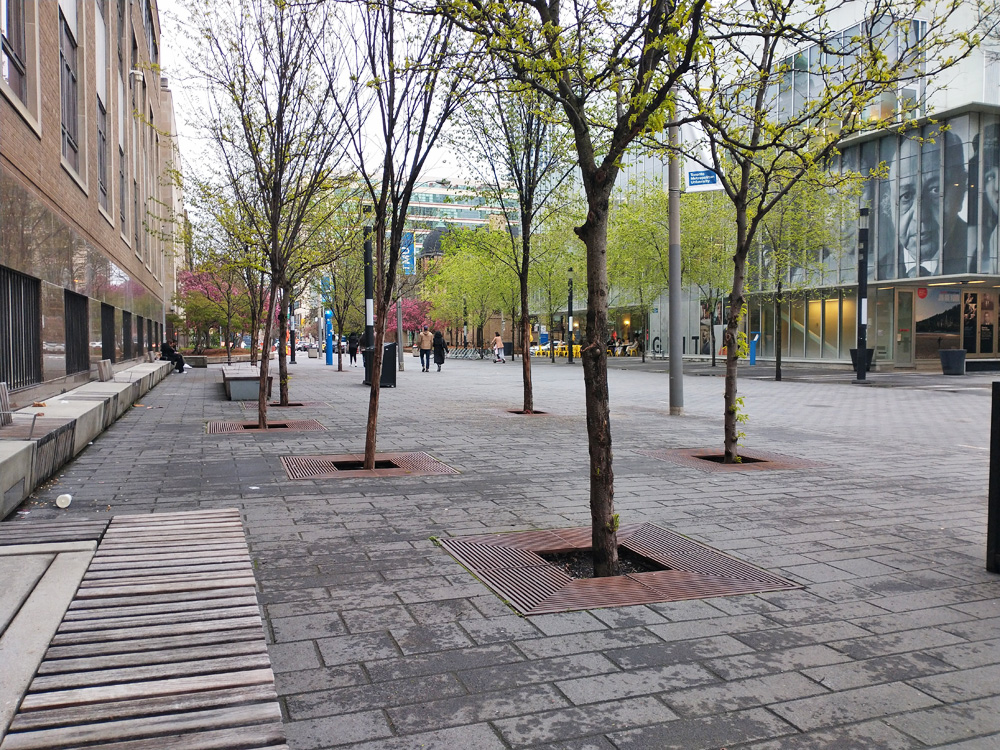
10) Pedestrians excepted signs
After the pandemic got so many Torontonians walking through their neighbourhoods, a long-standing source of irritation became even more evident: “No Exit” signs on city streets that applied only to cars, ignoring the fact pedestrians (and often cyclists) actually did have an exit. In the winter of 2021 Walk Toronto launched a campaign to get the city to add “pedestrians excepted” pendants to these signs where appropriate, and we got City Council to agree. They were implemented that summer. It’s not the biggest or most impactful change, but it’s a sign (pun intended) that the City is becoming oriented to pedestrians as well as vehicles.
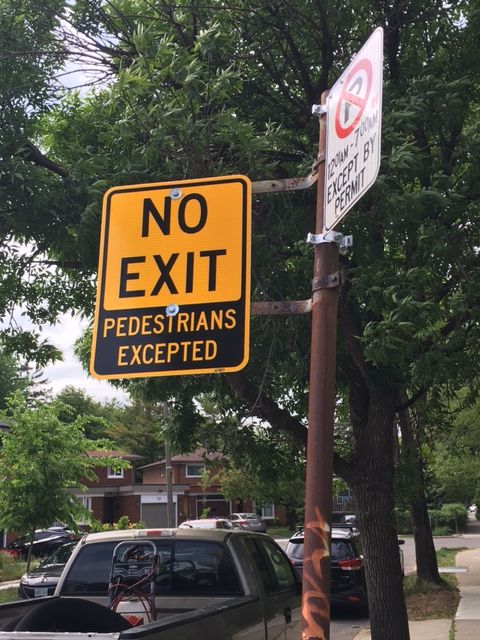
The Future
There are many more improvements the city could make, and some are in the works. One of the biggest potential improvements is rebuilding main streets as “Complete Streets.” While this policy has been in place in Toronto for a while, so far it has mostly meant adding bike lanes or transit lanes – both of which help pedestrians indirectly (by providing buffers from traffic) but not all that much directly. However, some major transformations are in the works, notably for downtown Yonge Street, which will be rebuilt with much wider sidewalks and a short fully pedestrianized section at soon-to-be-renamed Yonge-Dundas Square.
Plans for the Complete Street transformation of Yonge Street in North York, meanwhile, don’t change the already wide sidewalks much, but they should make walking on those sidewalks far more attractive through more trees, shorter crossings, less vehicle space, and slower vehicle speeds. The next big push for walking improvements needs to be in suburban areas, where pedestrians are most likely to get killed or injured. Continuing these kinds of changes on suburban arterial roads would be transformative for walking in Toronto.
The ten improvements listed above all need to be continued and expanded, and in some cases implemented more effectively, and there are many other potential improvements that could be introduced. With continued advocacy, and further commitment from the City, we can hope to enjoy an even safer and more enjoyable city for walking in another ten years.
This article is cross-posted on the Walk Toronto website.

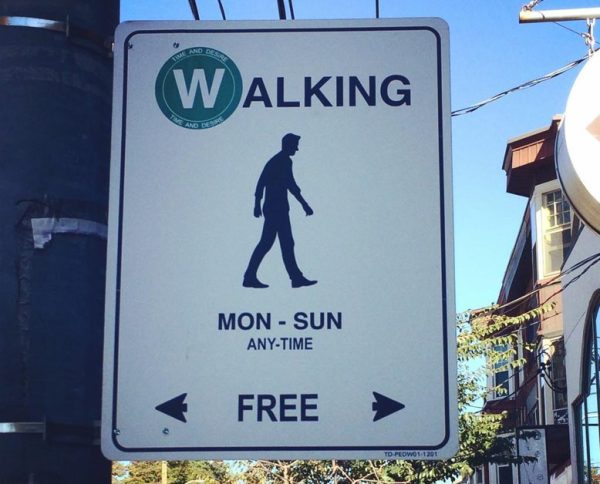

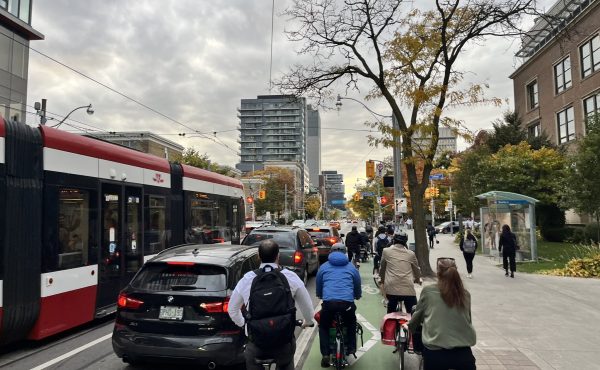

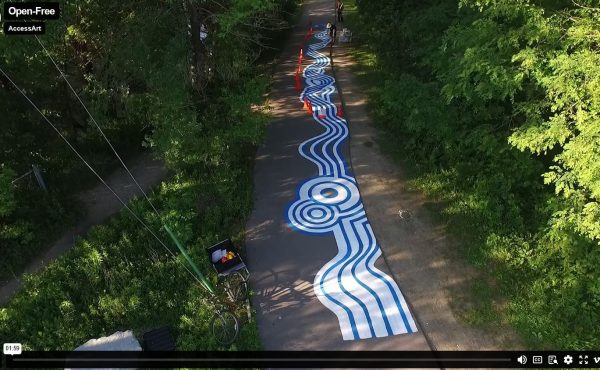
2 comments
‘Modified Standard’ Sidewalk Curb Cuts Put Pedestrians at Risk.
See. https://www.raisethehammer.org/article/2549/modified_standard_sidewalk_curb_cuts_put_pedestrians_at_risk
‘Driveway access was provided by ramps extending a short distance onto the street. Safe and comfortable for pedestrians, the design did not interfere with on-street parking.
So why replace that with something called the “modified standard approach”?
The “modified standard” provides driveway access by sloping approximately two-thirds of the sidewalk down to meet the road leaving one third flat for pedestrians. The design is uncomfortable and hazardous for pedestrians.’
This is a great article. Living here in Toronto, we do not notice all the changes mentioned. And it is pretty impressive to see these itemized.
Thanks